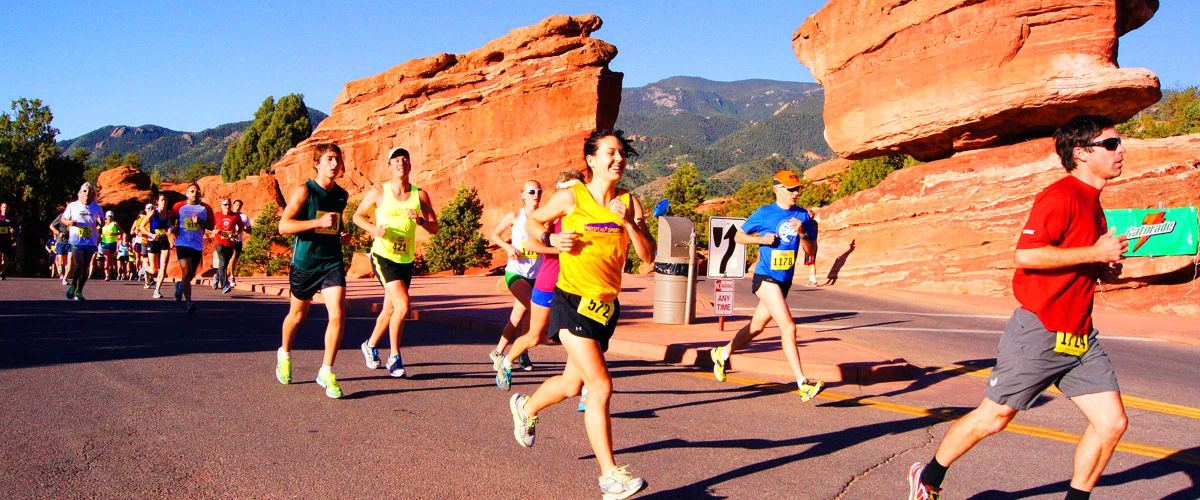- No events foundSearch location "{{search}}"




Pikes Peak Marathon
Manitou Springs, CO, United StatesThe Pikes Peak Marathon and ascent is a running event that begins at the base of Pikes Peak, in Manitou Springs, Colorado, and climbs over 7,815 feet (2,382 m) to the top of the 14,115 foot (4,302 m) peak. Since 1966, the event takes place each year in late summer, with the Ascent taking place on Saturday (slightly longer than a half-marathon, at 21.5km), and the round-trip marathon on Sunday (43km). Because of the nature of the run (dirt trails, rock, and other natural obstacles) and the high altitude, the race is much more difficult than standard 42.195-kilometre (26.219 mi) marathons. Winning times for the marathon are typically just under four hours (compared to elite "flatland" marathon times of just over two hours). Although the average grade of the slope is 11%, some sections are much steeper because the central portion of the race is relatively flat. The initial three miles (5 km) are very steep. The central 7 miles (11 km) start as rolling terrain, but become progressively steeper toward the end. The top 3 miles (4.8 km) are above timberline and require some rock scrambling to reach the summit. Oxygen levels drop progressively as altitude rises, further compounding the uphill ordeal.
Winning race times differ significantly from year to year, often depending on weather and trail conditions. Some races have been associated with hot, dry conditions, and others have been associated with snow and cold at the top of the peak. The race attracts hundreds of runners for both the ascent and for the round-trip marathon. The USDA Forest Service limits the number of runners to 1,800 for the ascent and 800 for the marathon, and the race registration typically fills in one or two days.
Because the Ascent and Marathon are so unique and so physically demanding when compared to other half-marathons or marathons, having a general understanding of the courses is the key to planning your training. The Ascent or ascent portion of the Marathon can take as long, or longer, than a full flatland marathon. In fact, many flatlanders find that it can take much longer! On the other hand, if you have trained in high altitude, it is possible to go a little faster than your flatland marathon time during the Ascent. In general, if you live at altitude, go with your flatland marathon time. Otherwise, add 1/2 hour to your flatland marathon time. The average descent time is about 63% of the runner's Ascent time. In other words, the downhill is not free, and there are even a few ups on the way down!
TBD
Entries open March 12
August 25th, 2019
43km / 21.5km
Films

